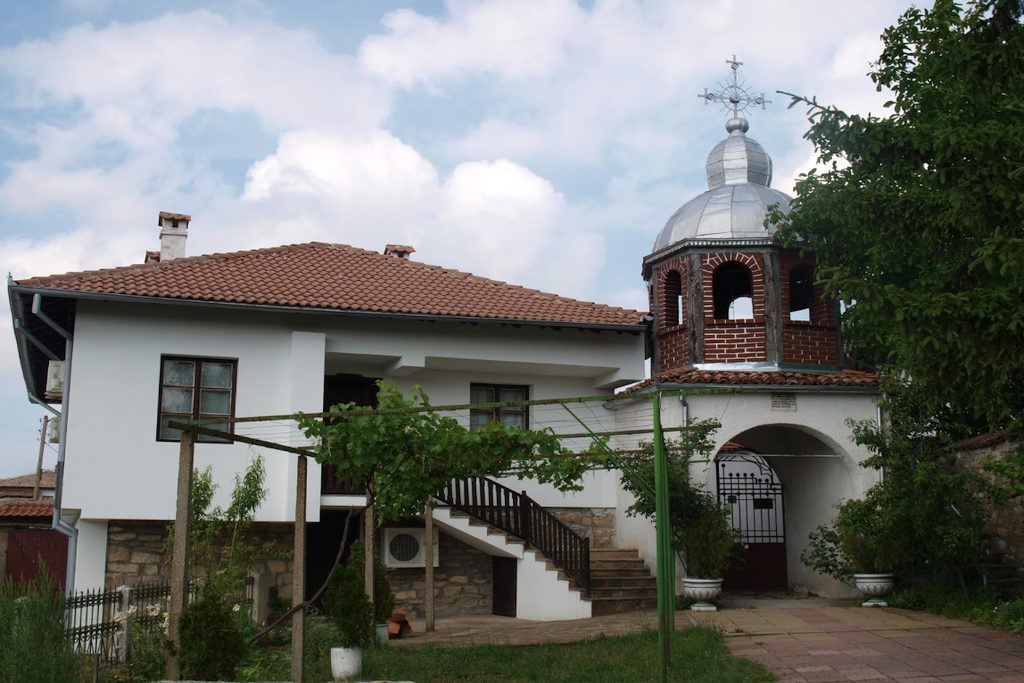

“The Virgin Mary” – Arbanasi Monastery was founded during the second Bulgarian Empire. Evtimii helped during the turbulent years when Bulgaria was divided by Shishman to its construction, judging by plates with inscriptions found, both here and in the Patriarchal “Holy Trinity” Monastery. After the fall of the Bulgarian capital Veliko Tirnovo in 1393, the St. Mary Monastery, miraculously, survived. during the first centuries of ottoman domination, it is still in a good standing and rich, but later it lost ground due to a series of raids by robbers.
In 17 – 18 century, “The Virgin Mary” Arbanasi Monastery was resuscitated by the local population and became a monastery. The present church was built in 1680, and as in the case of the early church it worked as a parish church in this part of the village. Later, in 1716, at the initiative of the monk Daniel Trojan residential buildings were constructed around the place of worship and thus were resumed the monastery activities In the last attack of robbers in 1798, the church was severely damaged. In 1836 the monastery raises some new residential buildings and builds a tower above the gates.
Currently, Arbanasi “Virgin Mary” Monastery has a permanent activity. The oldest building in the monastery is the church “Assumption”, built in 1680. It represents a building with one nave, a cupola with a barrel vault. Ii consists of one nave, a porch (women’s section) and a chapel – “St. Trinity” in the north. The frescoes in the church are in two layers. The decoration of the nave is from the 17th century and here illustrated figures of saints, great holiday-themed stories, suffering and others. Upon entering the section of women scene the festive scene “Assumption” is depicted.
The Chapel of “St. Trinity” also consists of two rooms – the nave and porch also sprung. The frescoes in the chapel dates from the 17th century and are one of the oldest works of art of Tryavna art school. According to an inscription, the iconostasis sculpture is the work art of Hadji Dimitar, of Marko, of Joan and of Hristo Popov, and dates back to 1867. On the iconostasis are some interesting icons, such as “New Testament Trinity,” “Guiding Mother” and “Christ Almighty”. Besides the inconostasis, the icons from 17-18 century are arranged in the porch – “St. Mary of the Apostles”, “St. Nikola”, “John the Baptist” and others. A miraculous icon “St. Maria Trueruchitsa is kept in the church’s store, which is silvered and dates back in 18 century. In 1762 the Church and the Chapel were restored and decorated with mural paintings.
In the monastery church, a few interesting relics are kept. These are: lights egg-shaped, in silver and decorated with gold tiles. Other objects of worship are old censers, donated in 1680 by Kerala, Gina and Lina. In the high altar is kept a shroud in purple velvet, embroidered with silk embossed in white, yellow and blue. It describes the Jesus Christ body, alongside apostols and Virgin Mary. These relics, as well others, are gathered in the monastery’s museum.
Most of the residential buildings of Arbanasi “Virgin Mary” Monastery dating from 1716. In 1836 the monastery pick up some new residential buildings and builds a tower above the gates.
The monastery is for nuns and does not provide shelter and food.
